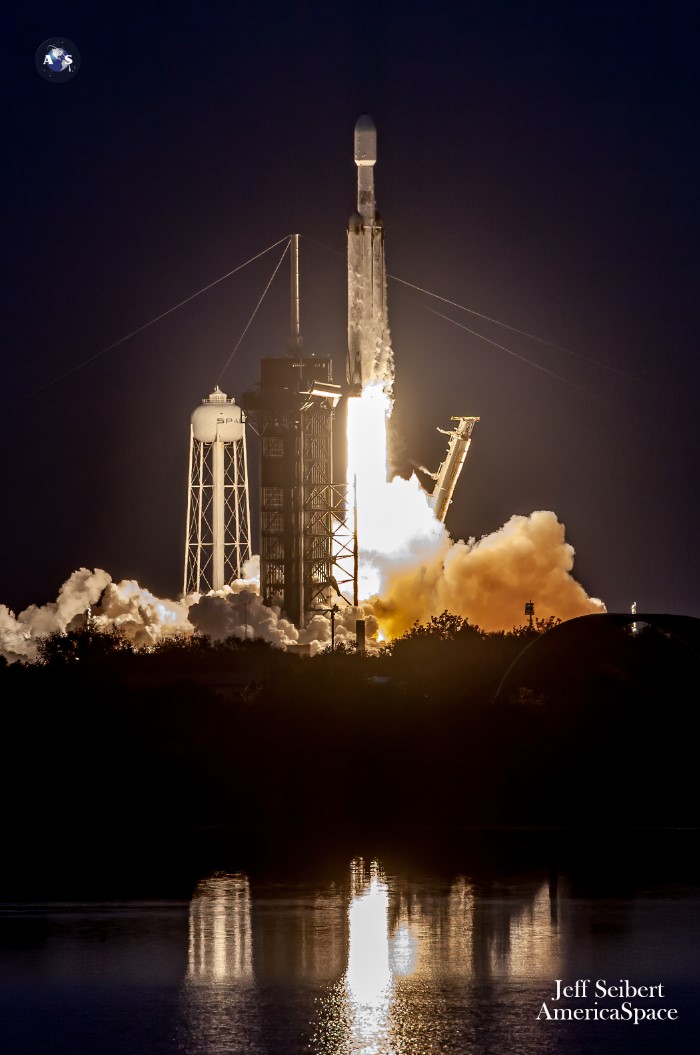
Less than a week, it seems, is turning into a long time between SpaceX launches. Following two flawless Falcon 9 flights earlier this month—the 114-strong Transporter-6 rideshare mission on 3 January and last Monday’s 40-strong batch of broadband internet satellites for London, England-headquartered OneWeb—the triple-barreled Falcon Heavy returned spectacularly to active service on Sunday evening, laden with the highly secretive USSF-67 payload for the U.S. Space Force.
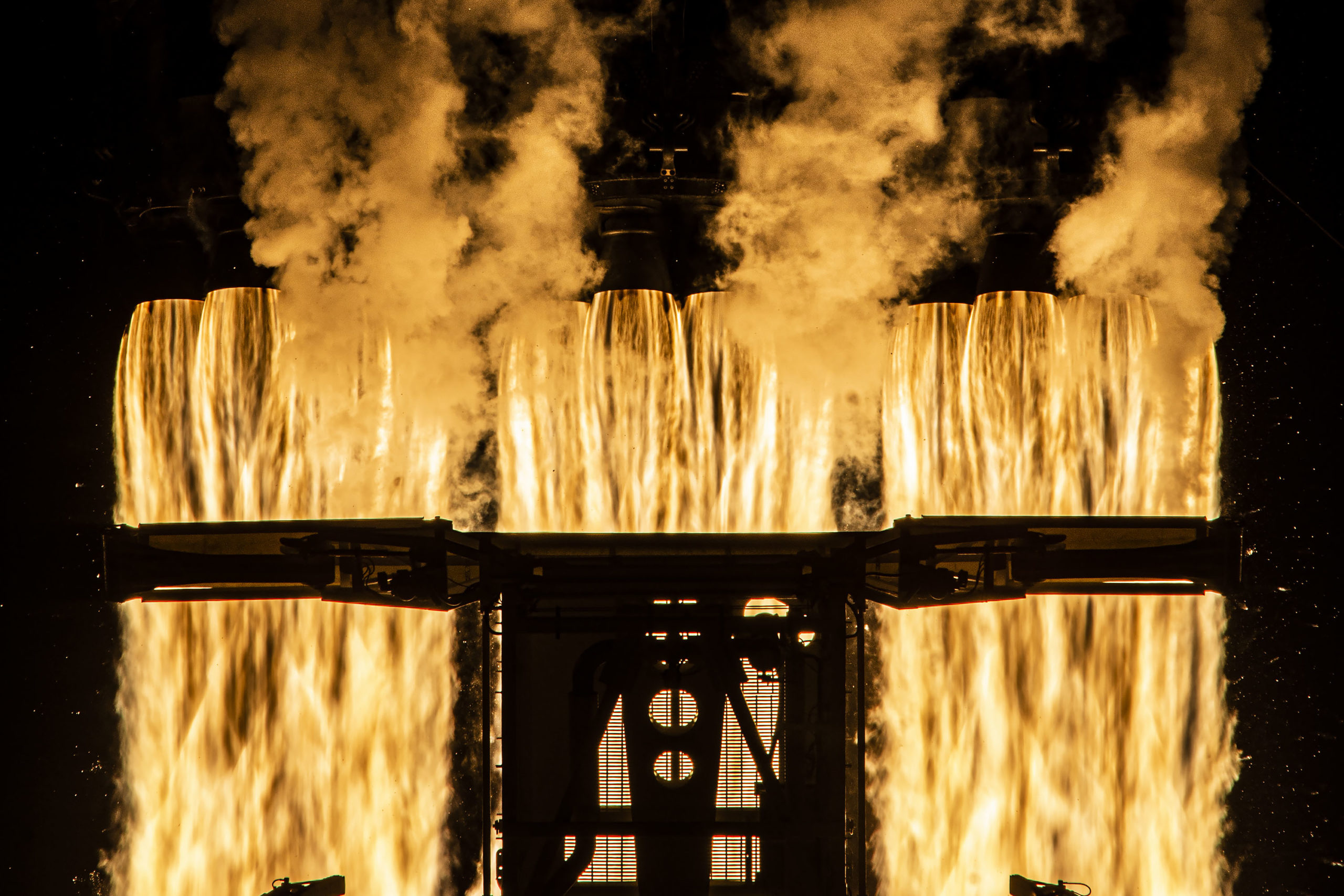
Following a full-duration static fire last Monday, the giant rocket speared away from historic Pad 39A at Florida’s Kennedy Space Center (KSC) at 5:56 p.m. EST Sunday, a few minutes after local sunset. Aboard the Falcon Heavy for her fifth flight in just shy of five years was USSF-67, for which launch services contracts worth $316 million were awarded to SpaceX back in August 2020.
Leading USSF-67’s multi-faceted payload is the second Boeing-built Continuous Broadcast Augmenting SATCOM (CBAS-2), flying for the Space Force’s Space Systems Command (SSC) of El Segundo, Calif. This payload is targeting a perch in geostationary orbit to furnish enhanced communications between U.S. and allied warfighters and the uninterrupted broadcasting of military data via space-based satellite relay links.
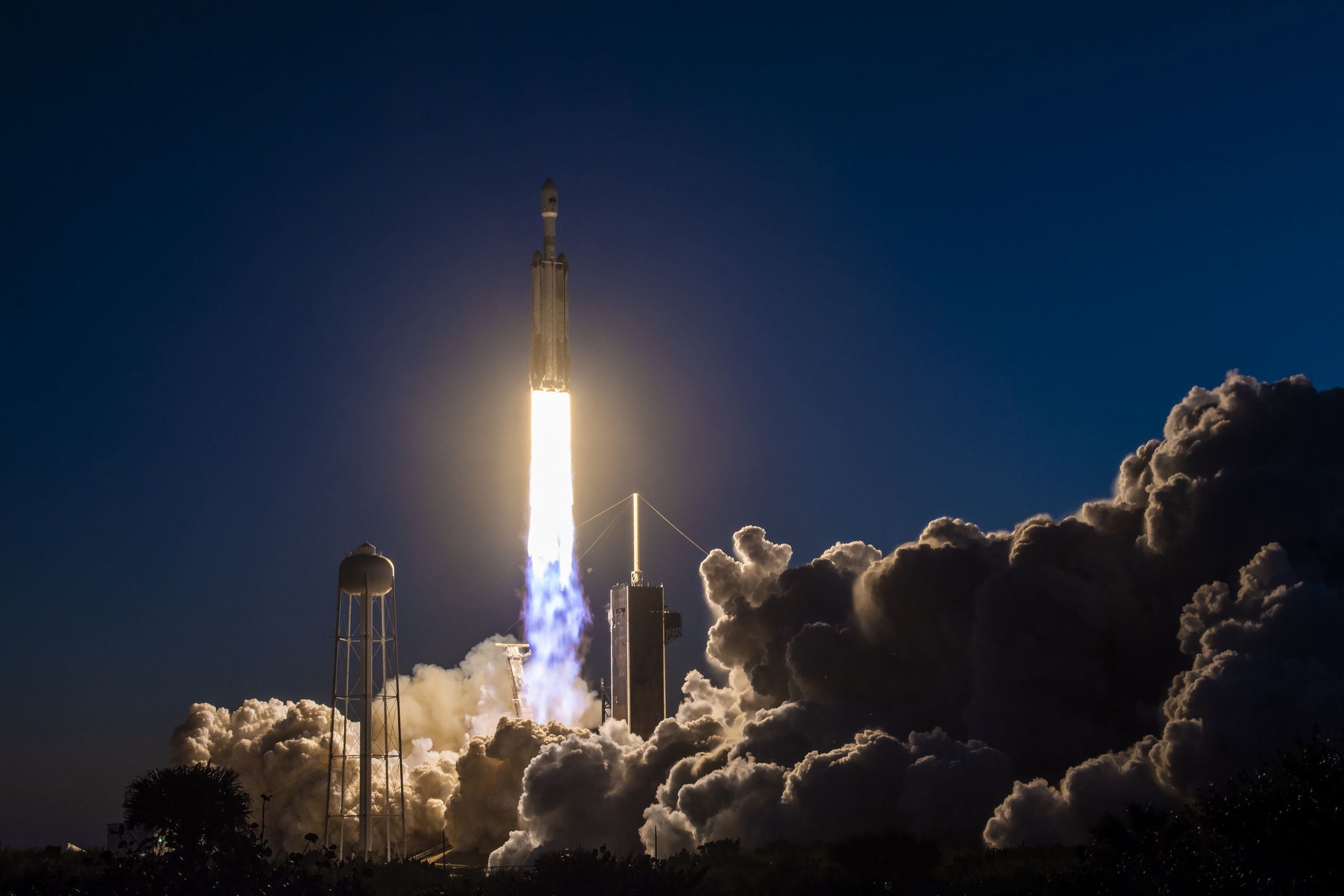
Thought to weigh in the region of 5,500 pounds (2,500 kilograms), a previous CBAS flew aboard the former Air Force Space Command’s AFSPC-11 mission, atop a United Launch Alliance (ULA) Atlas V, in April 2018. Also aboard USSF-67 is LDPE-3A, a mouthful of an acronym denoting the Long Duration Propulsive ESPA.
This carried a suite of experimental payloads affixed to an Evolved Expendable Launch Vehicle (EELV) Secondary Payload Adapter (ESPA) “ring”. According to SSC in a Friday news release, LDPE-3A includes a pair of SSC payloads, known as Catcher and WASSAT.
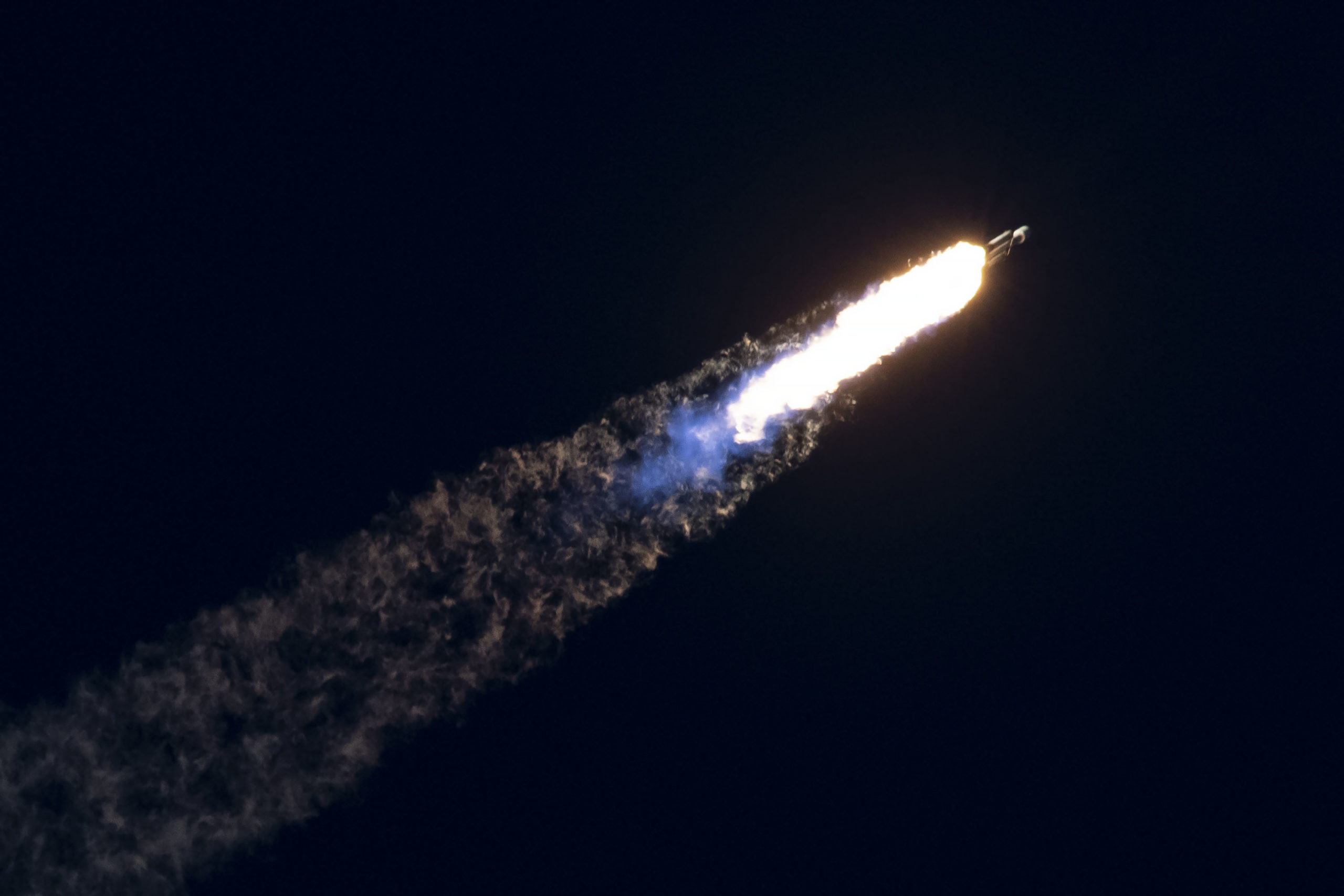
Three additional LDPE-3A payloads have been developed by the Space Rapid Capabilities Office (SRCO). Notably, the latter suite consists of two operational prototypes for enhanced situational awareness and an operational prototype crypto/interface encryption payload providing secure space-to-ground communications capability.
Catcher, developed by the Aerospace Corporation, is a prototype sensor designed to provide local space-domain-awareness insights. It is based in design upon an earlier instrument, the Energetic Charged Particle-Lite (ECP-Lite), which sought to trial miniaturized technologies to diagnose the adverse effects of radiation, charged particles and other space weather events upon orbiting spacecraft.
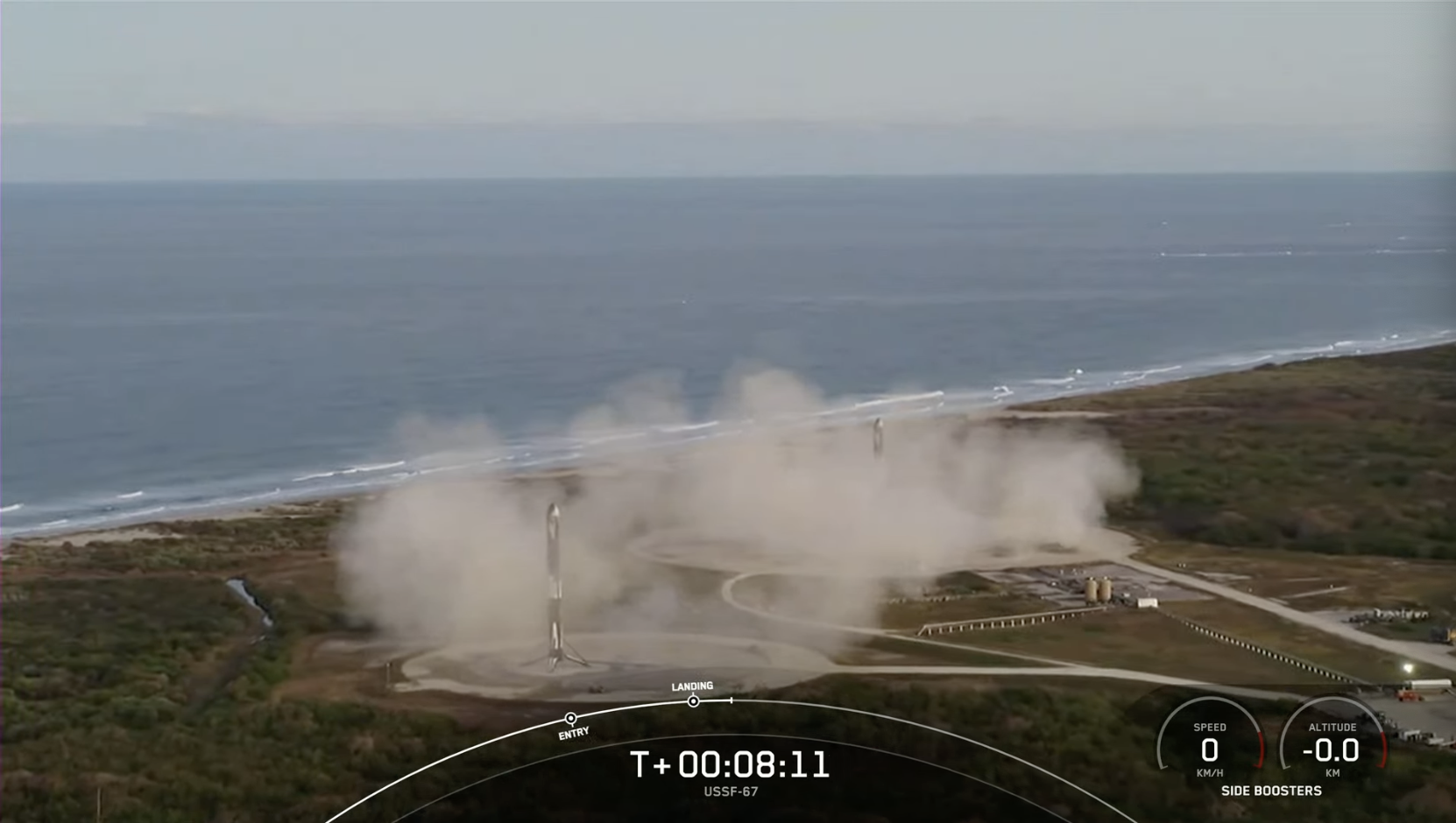
WASSAT is a prototype wide-area sensor, containing four cameras which will search for, and track, other spacecraft and debris at geostationary altitude, where communications, missile-detection, intelligence and weather satellites operate. It is understood that all five LDPE-3A payloads will remain affixed to the ESPA.
Tonight’s flight was the second National Security Space Launch (NSSL) conducted aboard the Falcon Heavy, following last November’s flight of the highly classified USSF-44 from KSC. Interestingly, the two side-boosters on tonight’s mission—B1064 and B1065—were making their second trips uphill, having served in the same capacity to boost USSF-44.
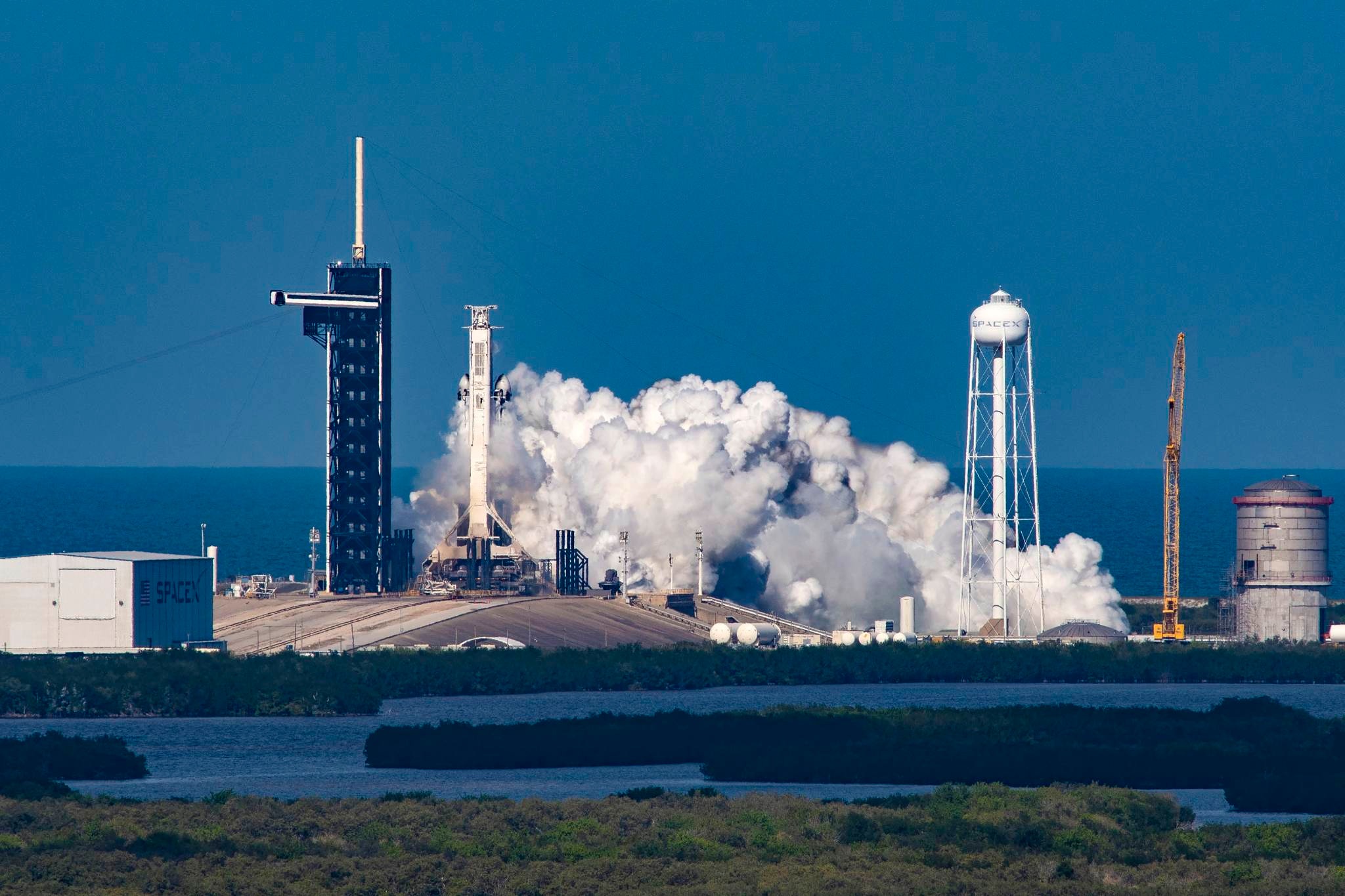
However, the energy requirements of both the USSF-44 and today’s USSF-67 missions required the center core in both cases to be expended. Current planning envisages B1064 and B1065 to fly a third time as side-boosters on the Space Force’s USSF-52 mission, another heavyweight geostationary flight, targeted for later this spring.
“This is a complex mission and truly represents what Assured Access to Space is all about,” said Maj. Gen. Stephen Purdy, program executive officer for Assured Access to Space. “The teamwork I’ve seen preparing for this launch has just been exceptional.
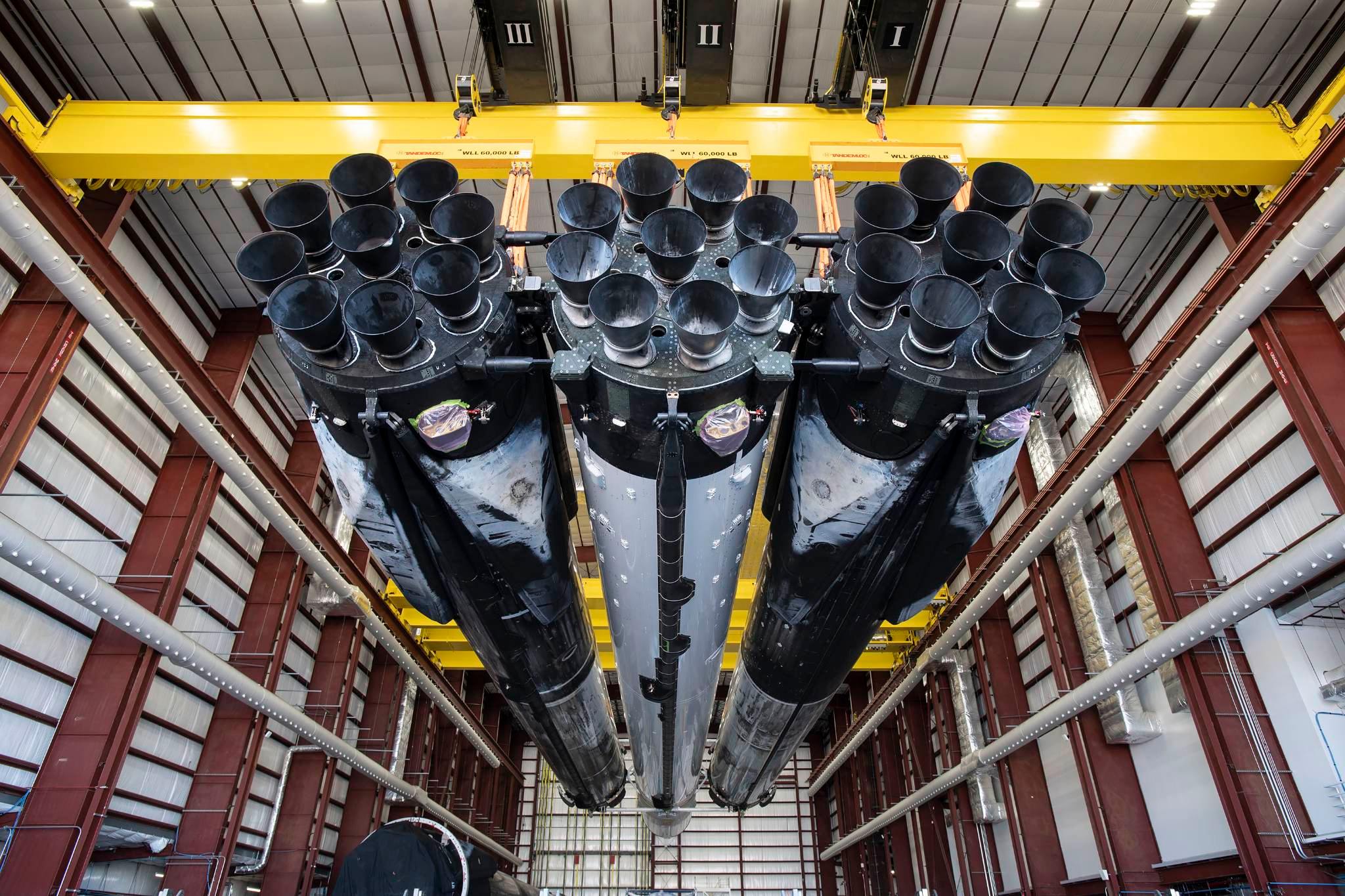
“We’ve worked side-by-side with SpaceX to ensure all boxes are checked…that all systems are Go. All our process for getting to that “Go” decision at Launch Readiness Review (LRR) are thorough and constantly evolve, so they’re also more efficient than ever.”
Weather conditions for the first of up to five Falcon Heavy launches in 2023 proved about 80-percent favorable for the opening launch attempt on Saturday evening, according to the 45th Weather Squadron at Patrick Space Force Base in its L-1 update. “A frontal boundary is moving through Central Florida, bringing rain showers and gusty southerly winds,” the 45th reported on Friday morning.
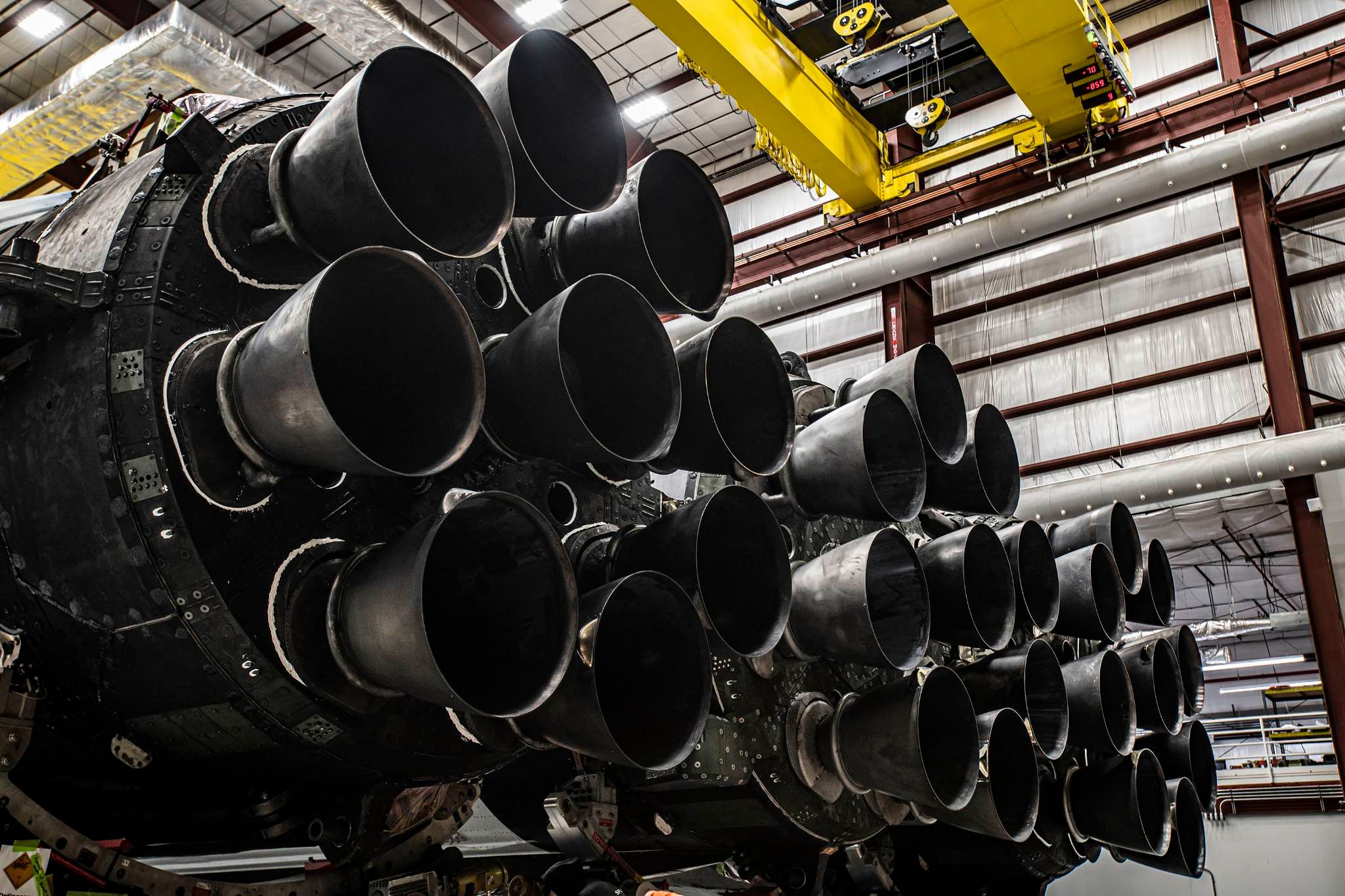
But with the front expected to push through the Spaceport, with winds becoming northwesterly and bringing cold air into the area, “mostly clear skies with gusty winds and temperatures in the 40s” were predicted, with Liftoff Winds—“which will diminish through the evening”—posing the only risk of substance. A delay to Sunday’s backup attempt at 5:56 p.m. EST presented an even better picture, with clear skies, gentler winds and a small chance of violating the Cumulus Cloud Rule.
As circumstances transpired, SpaceX elected to postpone on Saturday and move instead to Sunday’s backup launch opportunity. Threading the needle through this highly advantageous weather picture, the 27 Merlin 1D+ engines of the Falcon Heavy’s brand-new core stage and once-used side-boosters came alive a few minutes after sunset.
Punching out 5.4 million pounds (3.4 million kilograms) of thrust—the mightiest active operational rocket in the world since February 2018, now relegated to second place following last November’s debut of the Space Launch System (SLS)—the behemoth went airborne and roared into a beautiful Florida nightfall.
Two-and-a-half minutes after liftoff, the B1064 and B1065 side-boosters separated, as planned, from the stack, before pirouetting and twirling their way homeward to alight on solid ground at Landing Zones (LZ)-1 and 2, safe and sound, back at the Cape. Meanwhile, the B1070 center core continued the push towards space and the deployment of the USSF-67 payload, ahead of being expended in the Atlantic Ocean.
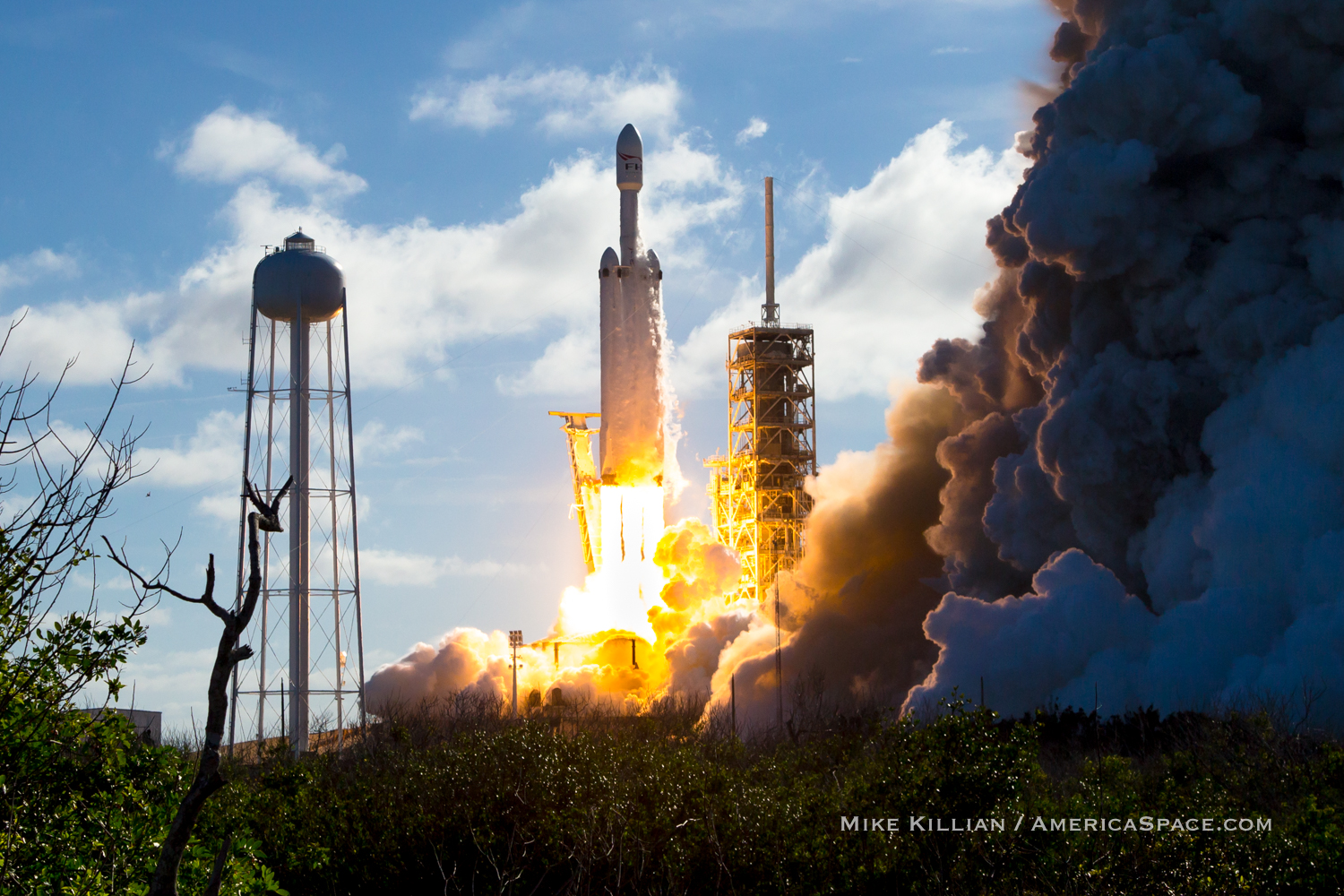
Although less than six days elapsed between tonight’s Falcon Heavy mission and last Monday’s OneWeb flight, plans to fly another Falcon 9 out of Vandenberg Space Force Base, Calif.—carrying 2023’s first stack of 51 Starlink internet communications satellites—has met with delay. Hopes that it and OneWeb might fly a record-breaking 35 minutes apart on Monday evening ultimately came to nothing, as weather on the West Coast hovered around 30-percent favorable and rain lashed the Los Angeles area.
The hapless B1075 core found her initial T-0 at 8:15 p.m. PST (11:15 p.m. EST) Monday shifted back to 9:35 p.m. PST (12:35 a.m. EST Tuesday), before being scrubbed altogether, due to the unfavorable weather. Launch was retargeted for 8:02 p.m. PST (11:02 p.m. EST) Tuesday.
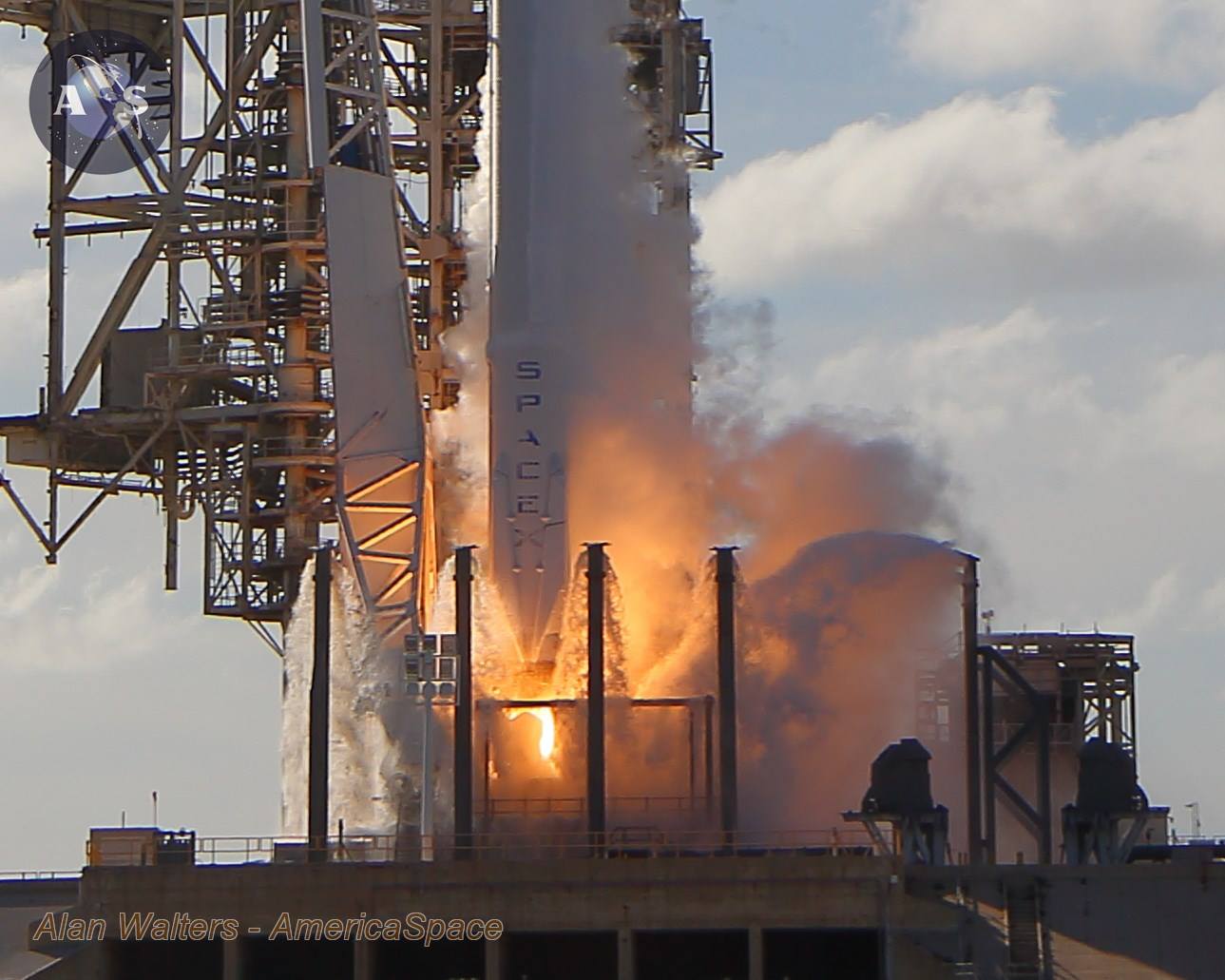
But Tuesday evening brought no respite, as SpaceX teams again stood down, “to take a closer look at data from second stage”. This prompted yet another delay until no earlier than Wednesday night, then Saturday night and eventually Sunday morning.
But on Friday, SpaceX announced that continuing “unfavorable weather conditions”—notably, 15-foot-high (4.5-meter) waves offshore in the Pacific Ocean and high winds across Central and Southern California—had precipitated a decision to postpone Starlink until no earlier than Thursday, 19 January. That decision pushed the Falcon Heavy and USSF-67 forward as the next launch on the manifest and SpaceX’s third flight in January’s first two weeks.

Tonight’s successful flight marks the Falcon Heavy’s fifth launch in a little under five years. First flown in February 2018, carrying Elon Musk’s cherry-red Tesla Roadster on a Mars-crossing trajectory, she went on to lift Saudi Arabia’s heavyweight Arabsat-6A communications satellite in April 2019 and the Space Test Program (STP)-2 payload in the giant rocket’s first nighttime launch the following June. Most recently, she launched the Space Force’s USSF-44 last November.
With up to five Falcon Heavy missions planned in the months ahead, 2023 might end with more launches by the triple-barreled vehicle in a single calendar year than it previously achieved in its first four years of operational life. Of note, in October, a Heavy will loft NASA’s Psyche mission to visit the metal-rich Main Belt asteroid of the same name.
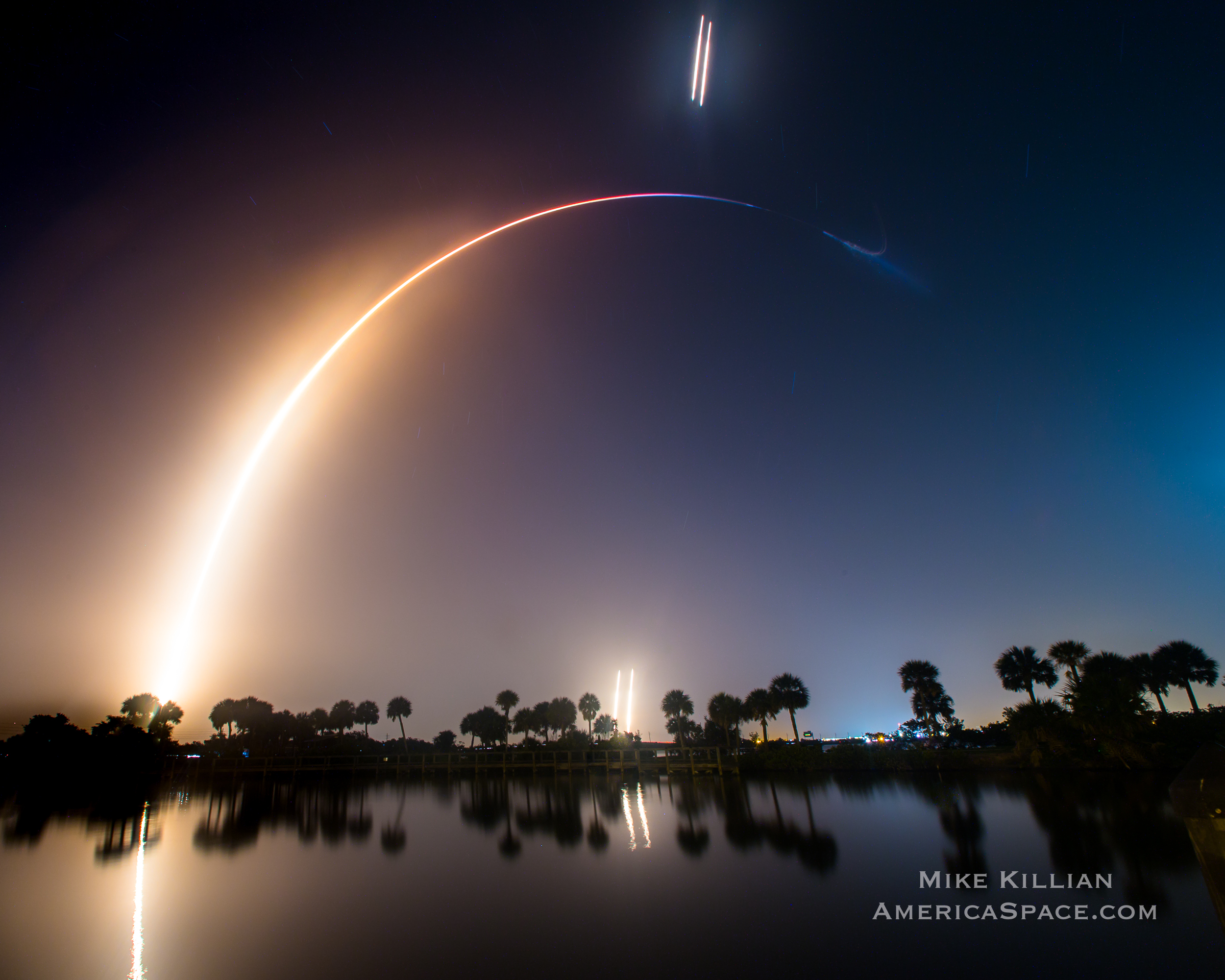
Other payloads heading uphill in 2023 atop Falcon Heavies include the Space Force’s USSF-52 mission—launch services contracts for which were initially awarded to SpaceX back in June 2018—and four heavyweight geostationary communications satellites. The USSF-52 mission, which originally entered life as AFSPC-52, before Air Force Space Command became part of the Space Force with the latter’s inception in December 2019, was originally scheduled to fly late in Fiscal Year 2020.
The original launch services contract was reportedly valued at $130 million. But in August 2021 was increased by $19.2 million to a total of $149.2 million, incorporating “a change in contract requirements”, with launch “expected to be completed” by April 2022.




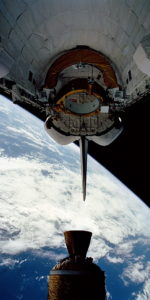
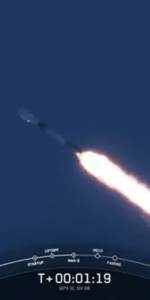
18 Comments
18 Pings & Trackbacks
Pingback:Falcon Heavy Launches USSF-67, Readies for Busy 2023 – Missile Defense Advocacy Alliance
Pingback:Falcon Heavy Launches USSF-67, Readies for Busy 2023 | taktik(z) GDI (Government Defense Infrastructure)
Pingback:SpaceX Launches GPS III-06, Busy January Continues - AmericaSpace
Pingback:SpaceX Launches GPS III-06, Busy January Continues - Space News
Pingback:SpaceX Launches 9x-Flown Falcon 9, First Eight-Mission Month Beckons - AmericaSpace
Pingback:SpaceX Launches Hispasat’s Amazonas Nexus, First Commercial Geostationary Mission of 2023 - AmericaSpace
Pingback:SpaceX Launches Seventh Falcon 9 of March, Looks Ahead to 80-Mission Year - AmericaSpace
Pingback:SpaceX Prepares for Record-Breaking Falcon 9 Launch Today - AmericaSpace
Pingback:SpaceX Prepares for Report-Breaking Falcon 9 Release As of late - NACION ASTRAL
Pingback:SpaceX Flies Hosted Mission for Intelsat & NASA, Heads for Year’s 25th Mission - AmericaSpace
Pingback:Three Missions, Three Pads, Two Coasts: SpaceX Ready for Busy Month-End Launch Week - AmericaSpace
Pingback:SpaceX Launches 22 Starlinks, Kicks Off Busy June Manifest - AmericaSpace
Pingback:SpaceX Launches CRS-28 Cargo Ship to Space Station - AmericaSpace
Pingback:SpaceX Wraps Up Busy June, Looks Ahead to 1 July Euclid Launch - AmericaSpace
Pingback:SpaceX Wraps Up Busy June, Appears to be like Forward to one July Euclid Release - NACION ASTRAL
Pingback:SpaceX Launches Euclid to Probe the “Dark” Universe - AmericaSpace
Pingback:SpaceX’s “Sweet Sixteen” Launches Starlinks, Enters Reusability Record Books - AmericaSpace
Pingback:SpaceX Targets Midnight Launch for 16x-Flown Falcon 9 - AmericaSpace